Ever wished you could create new plants from your existing ones without buying more? Good news — you can! Growing plants from cuttings is one of the easiest, most satisfying, and cost-effective ways to expand your indoor or outdoor garden.
Plant cuttings involve taking a piece of a healthy parent plant and encouraging it to develop roots, eventually growing into an entirely new plant. It’s an age-old method gardeners have used for generations — and with the right techniques, even beginners can master it.
In this detailed guide, we’ll show you how to grow plants from cuttings easily, the types of cuttings you can use, and essential tips for successful plant propagation.
Why Grow Plants from Cuttings?
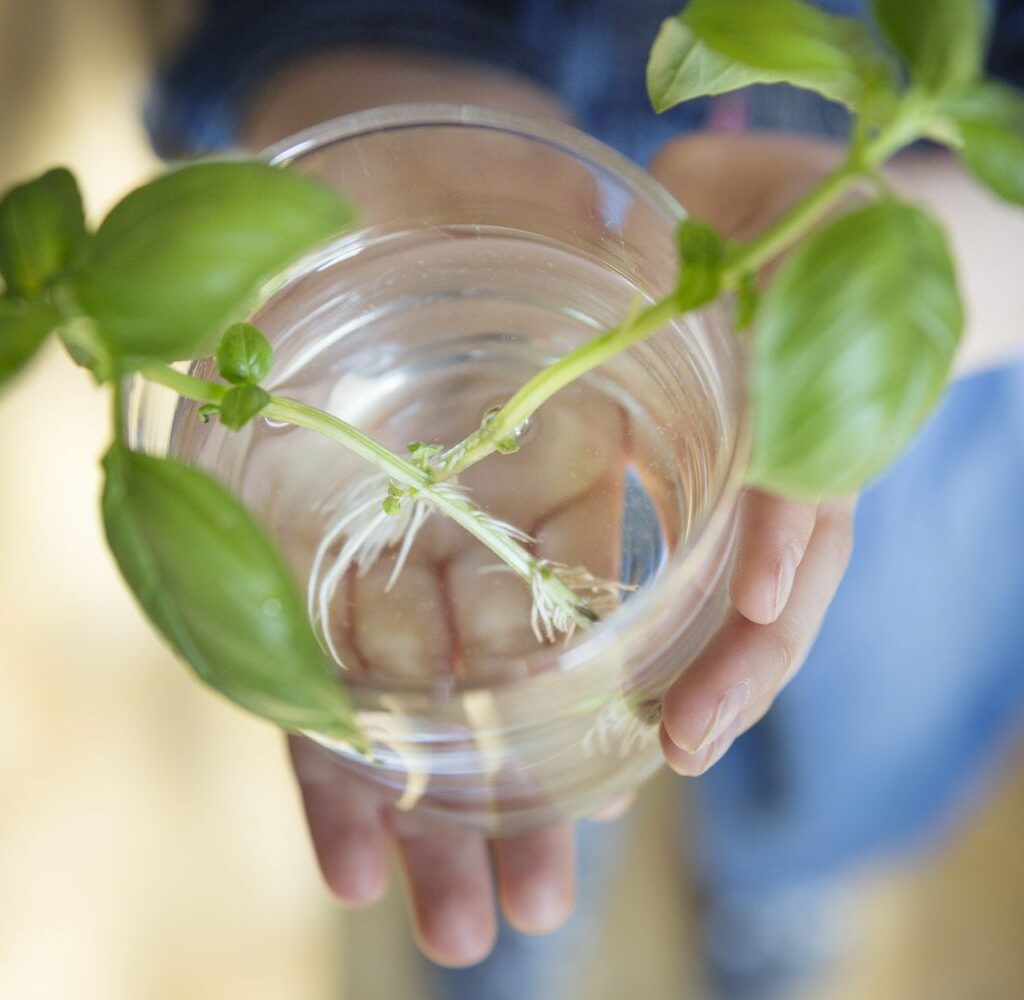
Before we get into the how-to, let’s explore why propagation through cuttings is so popular:
- Save money by multiplying your favorite plants for free.
- Preserve heirloom or sentimental plants easily.
- Fill your garden or home with more greenery without visiting a nursery.
- Quick, reliable method compared to growing from seeds.
- Fun and rewarding project for plant lovers and hobbyists.
Types of Plant Cuttings
Not all cuttings are the same. Depending on the plant and propagation method, you can grow new plants from different parts of the parent plant:
Stem Cuttings
The most common type. A section of the plant’s stem is cut and rooted.
Examples: Pothos, rose, money plant, basil, coleus.
Leaf Cuttings
A healthy leaf or part of it is used to grow a new plant.
Examples: Snake plant, African violet, jade plant.
Root Cuttings
A piece of root is cut and planted to grow a new shoot.
Examples: Mint, blackberry, horseradish.
Node Cuttings
A cutting that includes at least one node (the small bump where leaves grow) is essential for many plants to root successfully.
Examples: Monstera, pothos, philodendron.
Tools You’ll Need
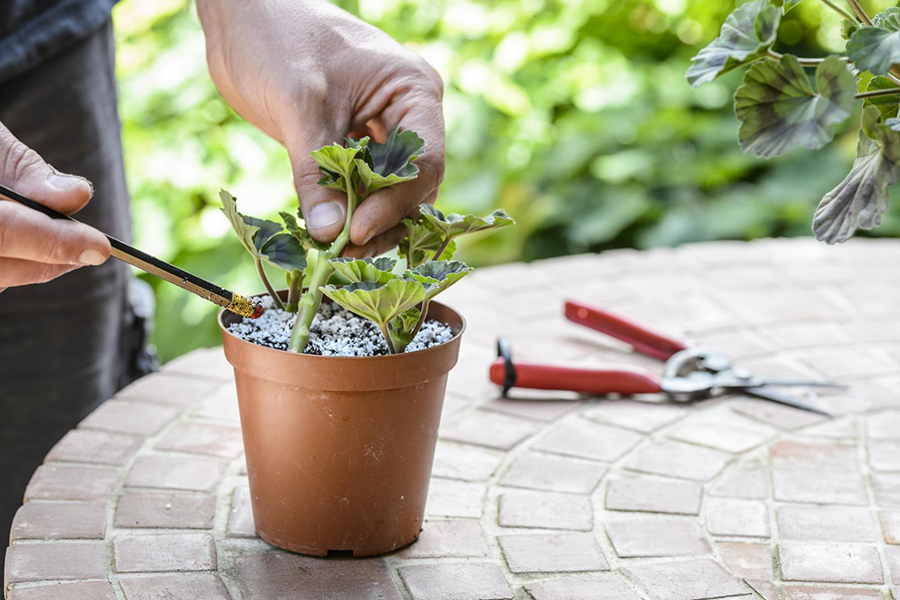
Before you start, gather these simple tools for clean, successful propagation:
- Sharp, sterilized scissors or pruning shears
- Small pots, jars, or containers
- Clean water (if rooting in water)
- Good-quality potting soil (if rooting in soil)
- Rooting hormone powder or gel (optional, for faster rooting)
- Labels (if propagating multiple plants)
How to Grow Plants from Cuttings: Step-by-Step
Let’s dive into the easiest method: growing plants from stem cuttings in both water and soil.
Method 1: Propagating in Water
Ideal for soft-stemmed plants like pothos, money plant, and coleus.
Steps:
- Select a healthy parent plant with fresh, green, disease-free stems.
- Use sterilized scissors to cut a 4–6 inch stem section with at least 1-2 nodes.
- Remove the lower leaves, keeping a few at the top.
- Place the cutting in a glass jar or bottle of clean water, ensuring the nodes are submerged.
- Keep the jar in a bright, indirect light spot.
- Change the water every 3–4 days to prevent stagnation.
- In 1–3 weeks, you’ll see roots developing.
- Once roots are 2–3 inches long, transfer the cutting into a pot with well-draining soil.
Tip: Transparent jars make it easier to monitor root growth.
Method 2: Propagating in Soil
Great for woody-stemmed or thick-leafed plants like rosemary, hibiscus, or roses.
Steps:
- Choose a healthy stem cutting of 4–6 inches, cutting just below a node.
- Remove lower leaves, leaving 2–3 at the top.
- (Optional) Dip the cut end in rooting hormone powder for faster rooting.
- Prepare a pot with moist, well-draining soil mix (a mix of potting soil and sand or perlite works well).
- Make a small hole with a stick and insert the cutting.
- Firmly press soil around the cutting to hold it upright.
- Water gently to moisten the soil.
- Cover the pot with a clear plastic bag (with air holes) to create a mini greenhouse.
- Keep in bright, indirect light and check soil moisture regularly.
- New growth and resistance to a gentle tug in 3–4 weeks indicate successful rooting.
Plants That Propagate Easily from Cuttings

If you’re a beginner, start with these fuss-free, fast-rooting plants:
- Pothos (Money Plant)
- Coleus
- Basil
- Rose
- Snake Plant
- African Violet
- Mint
- Philodendron
- Geranium
- Begonia
Essential Care Tips for New Cuttings
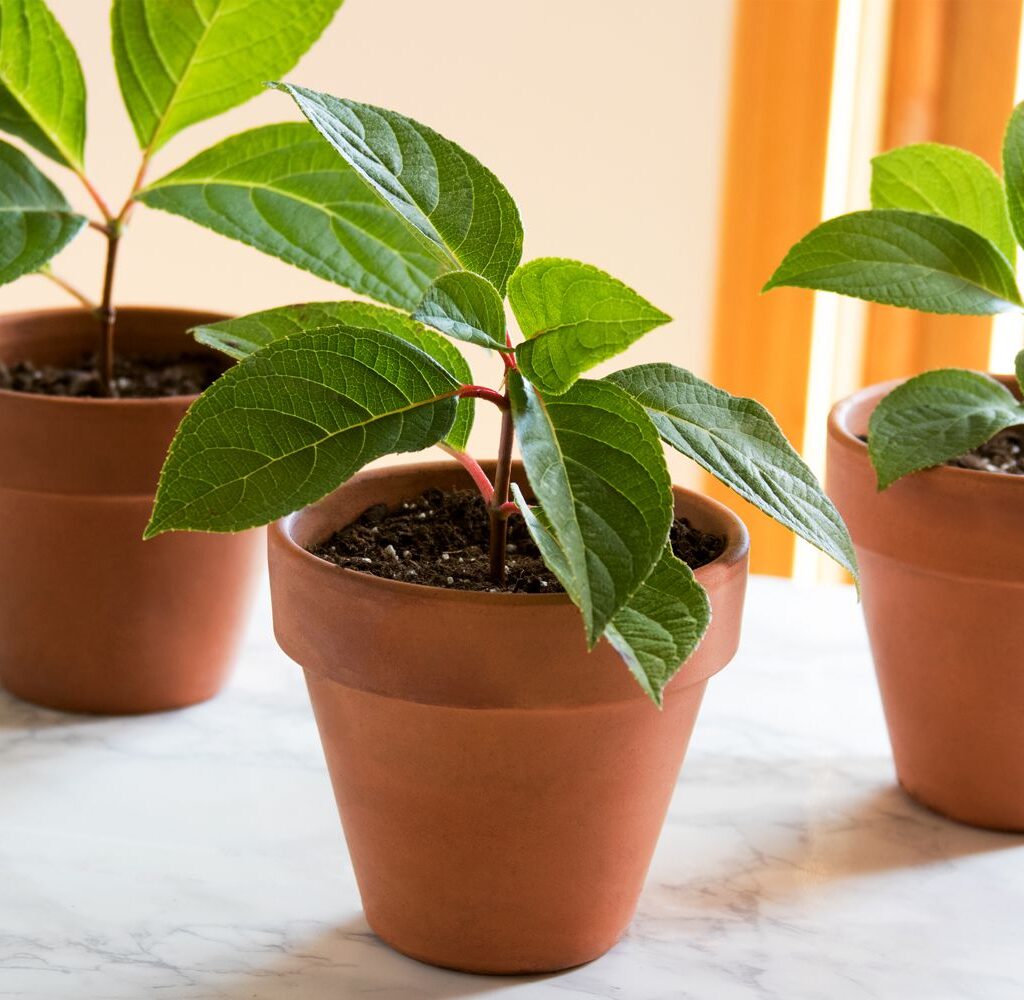
- Always use sterilized tools to prevent infection.
- Take cuttings in the morning when plants are hydrated.
- Avoid direct, harsh sunlight for new cuttings.
- Mist soil lightly to keep it evenly moist but not soggy.
- Keep humidity high using plastic covers, but ensure ventilation to prevent mold.
- Be patient — some plants root quickly in days, while others take weeks.
Optional: Speed Up Rooting with Rooting Hormone
Although many plants root fine without it, using a rooting hormone encourages faster, stronger root development.
How to use:
Dip the cut end of your stem cutting into the powder or gel before placing it in water or soil.
Available at garden centers or online.
Common Problems and Solutions
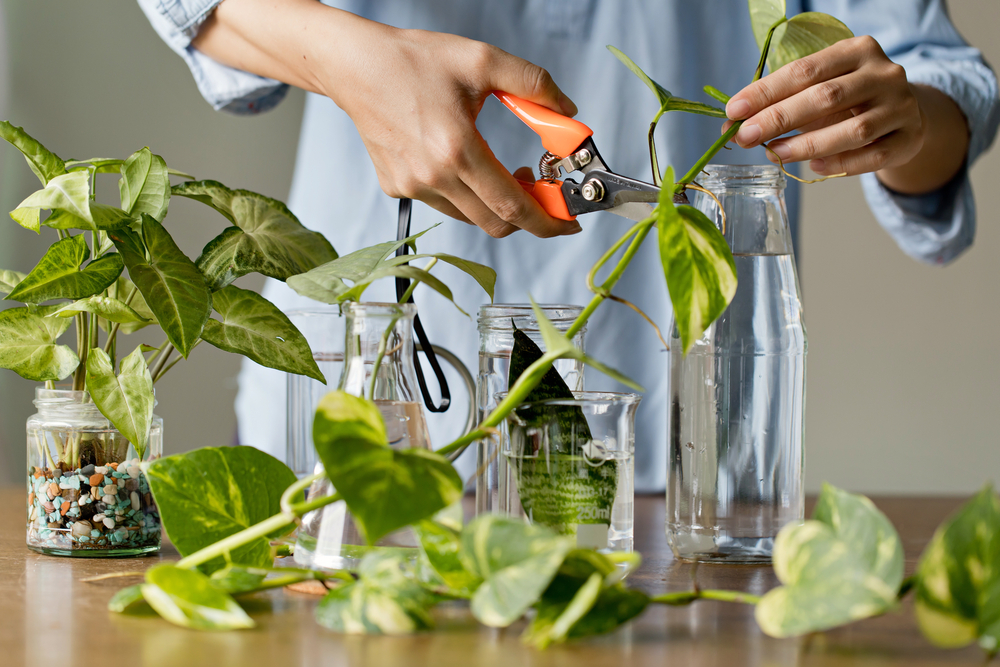
| Problem | Cause | Solution |
|---|---|---|
| Cutting wilting | Too much sun or dry air | Move to bright, indirect light; cover with plastic bag |
| No roots forming | Wrong season or poor cutting | Take fresh cutting in spring/summer |
| Water turning murky | Not changing water regularly | Change every 3–4 days |
| Mold in soil | Excess moisture and poor air circulation | Remove plastic cover occasionally; reduce watering |
Final Thoughts
Growing plants from cuttings is one of the simplest, most rewarding gardening skills to learn. It’s beginner-friendly, affordable, and a wonderful way to fill your home with lush greenery.
Whether you’re propagating a pothos vine in a glass jar or starting a rose bush from a stem, this method makes it easy to nurture new plants, gift them to friends, or multiply your favorite varieties.
So, grab your scissors, choose a healthy plant, and start your own propagation adventure today!

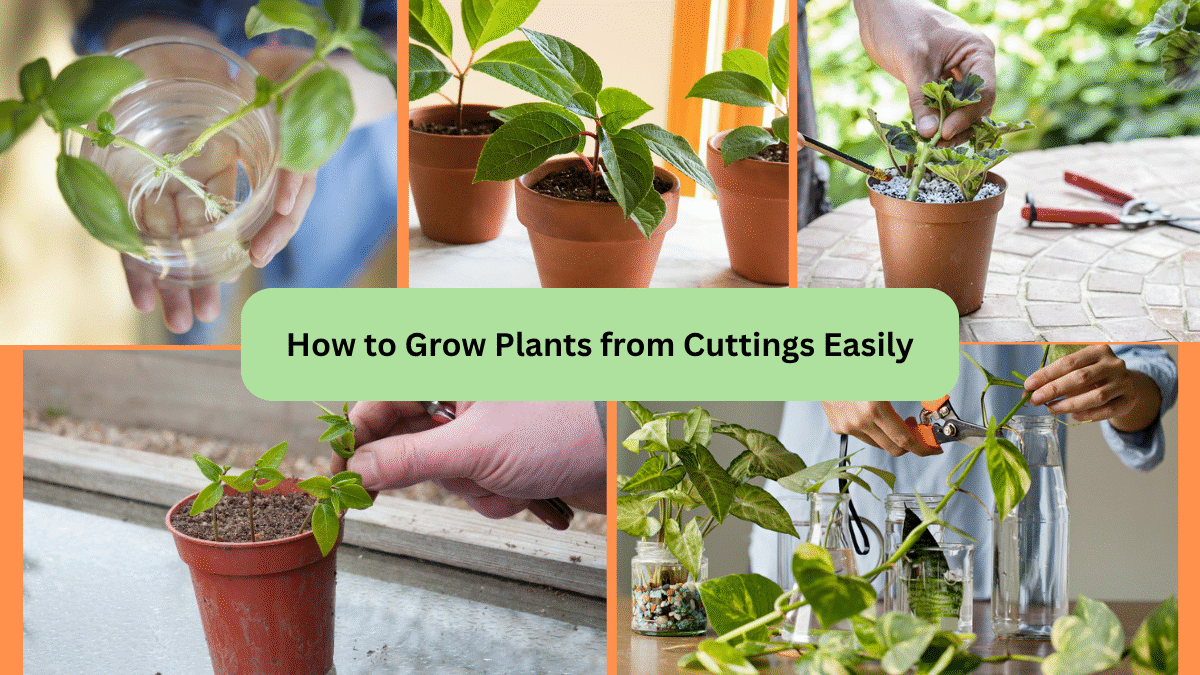



Leave A Comment